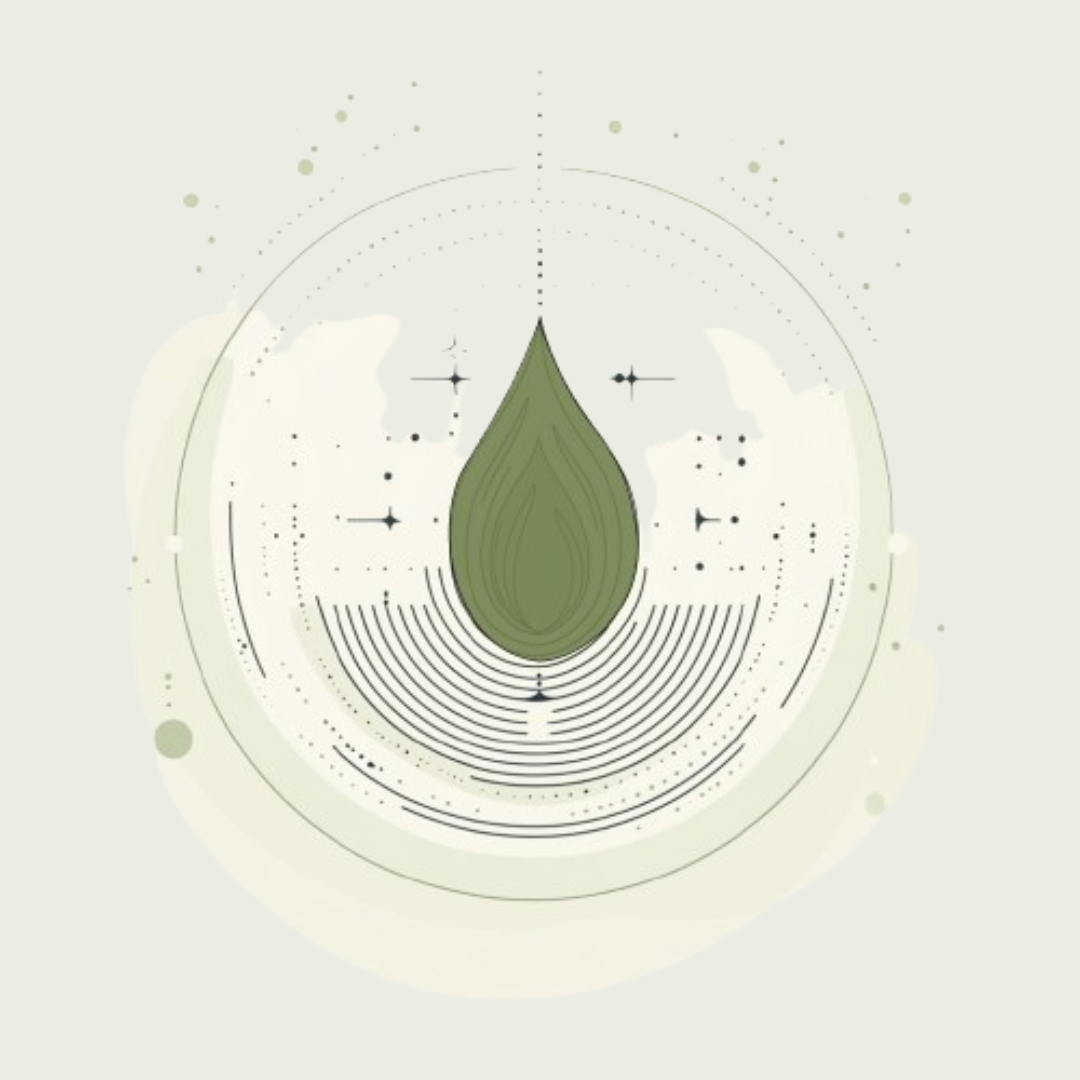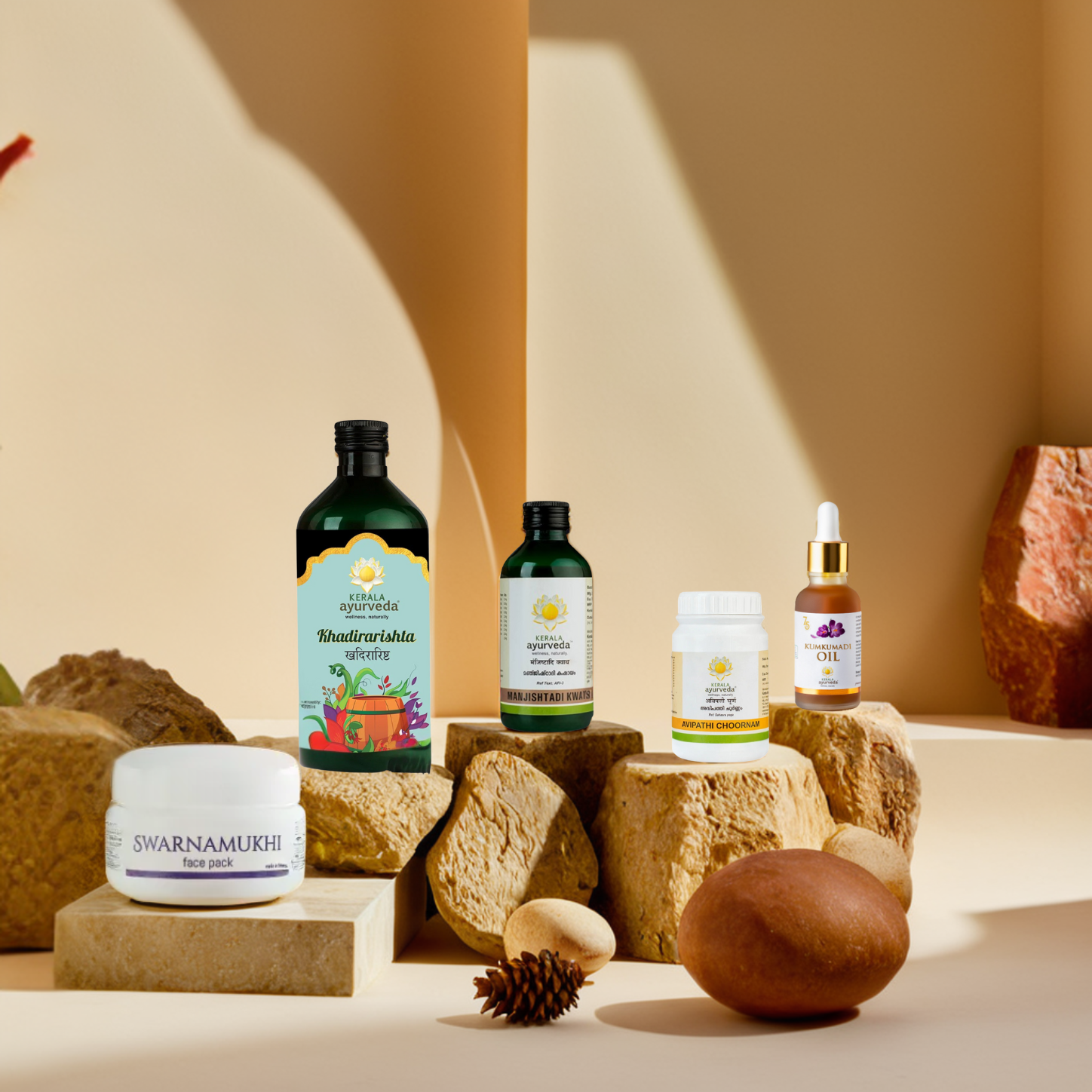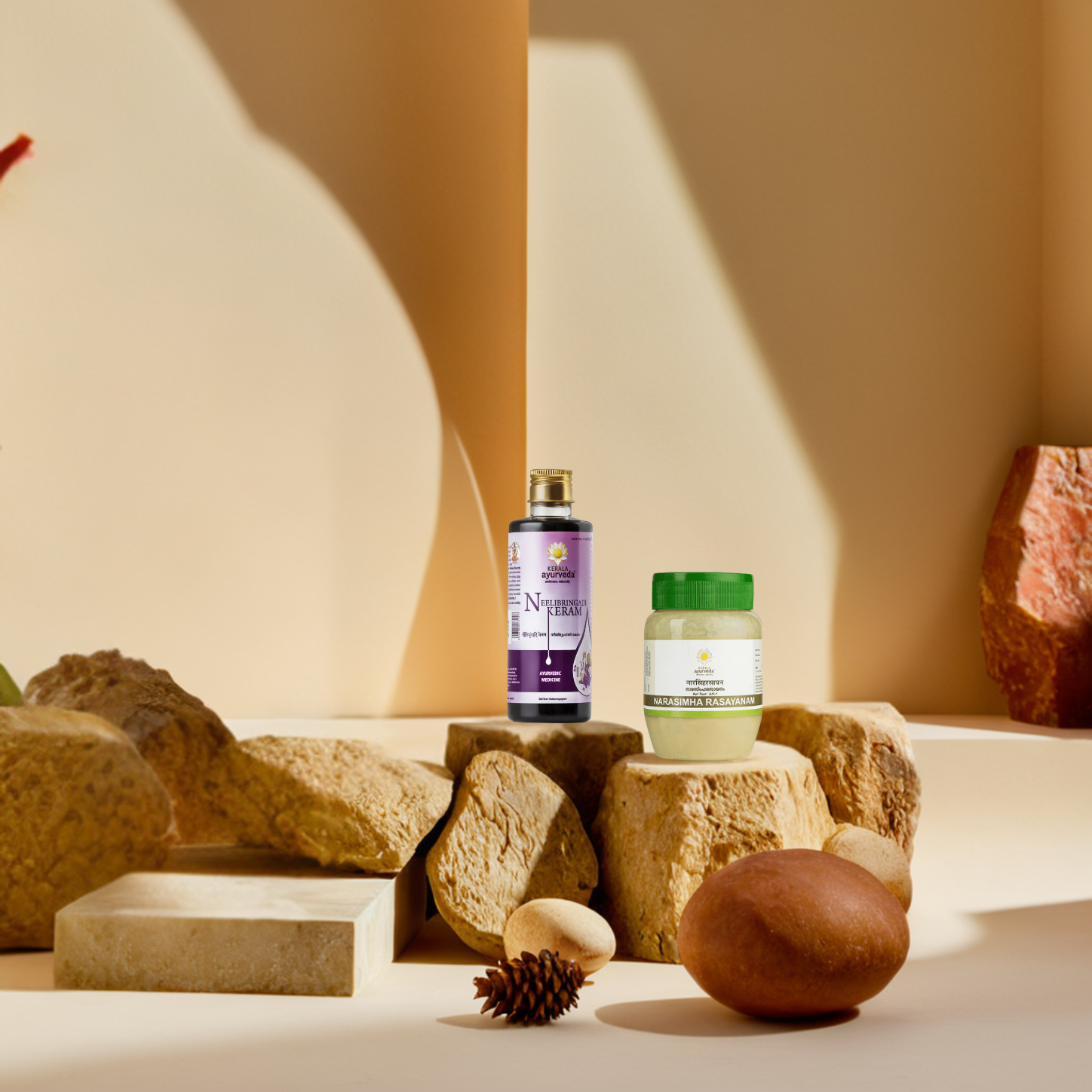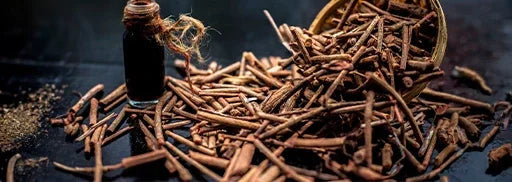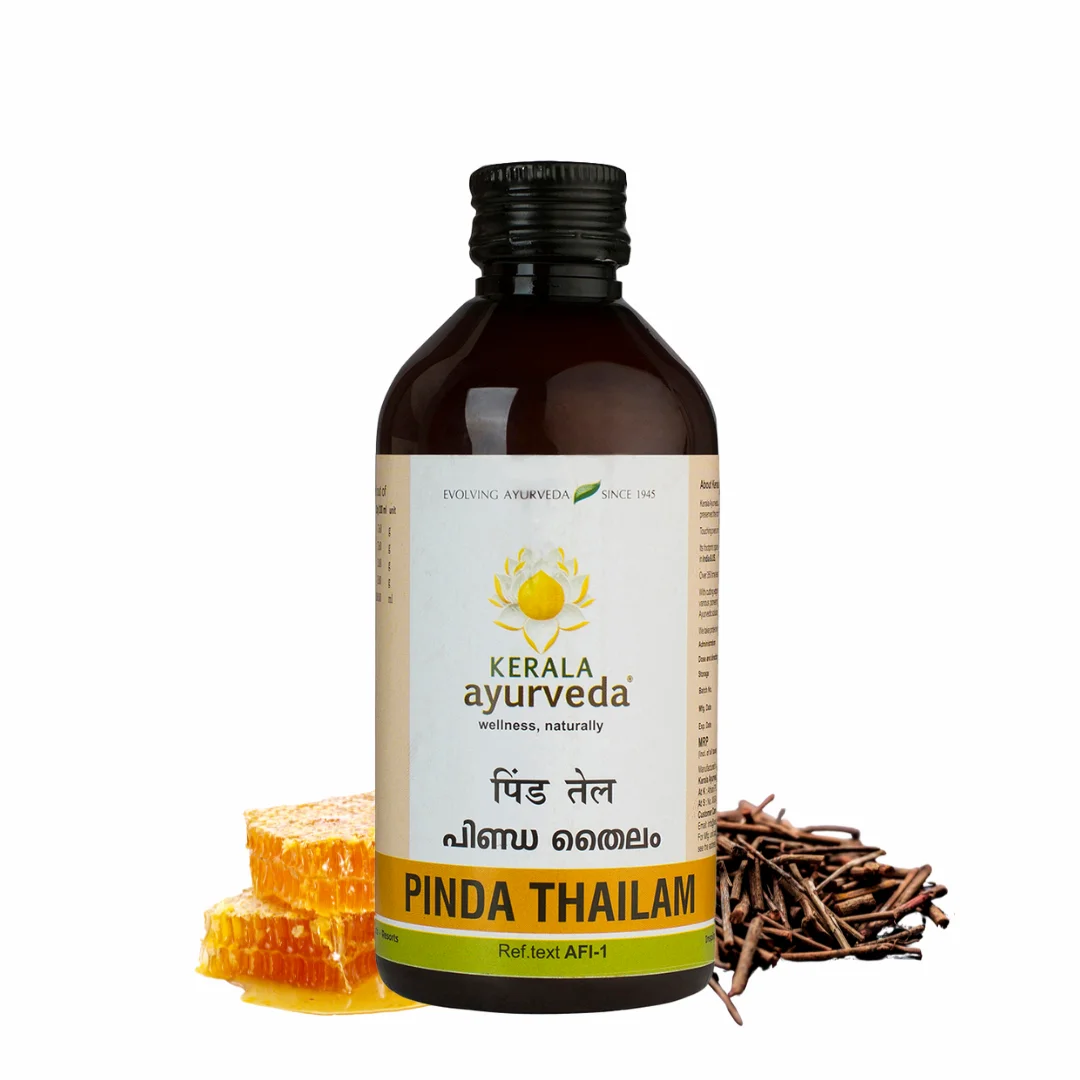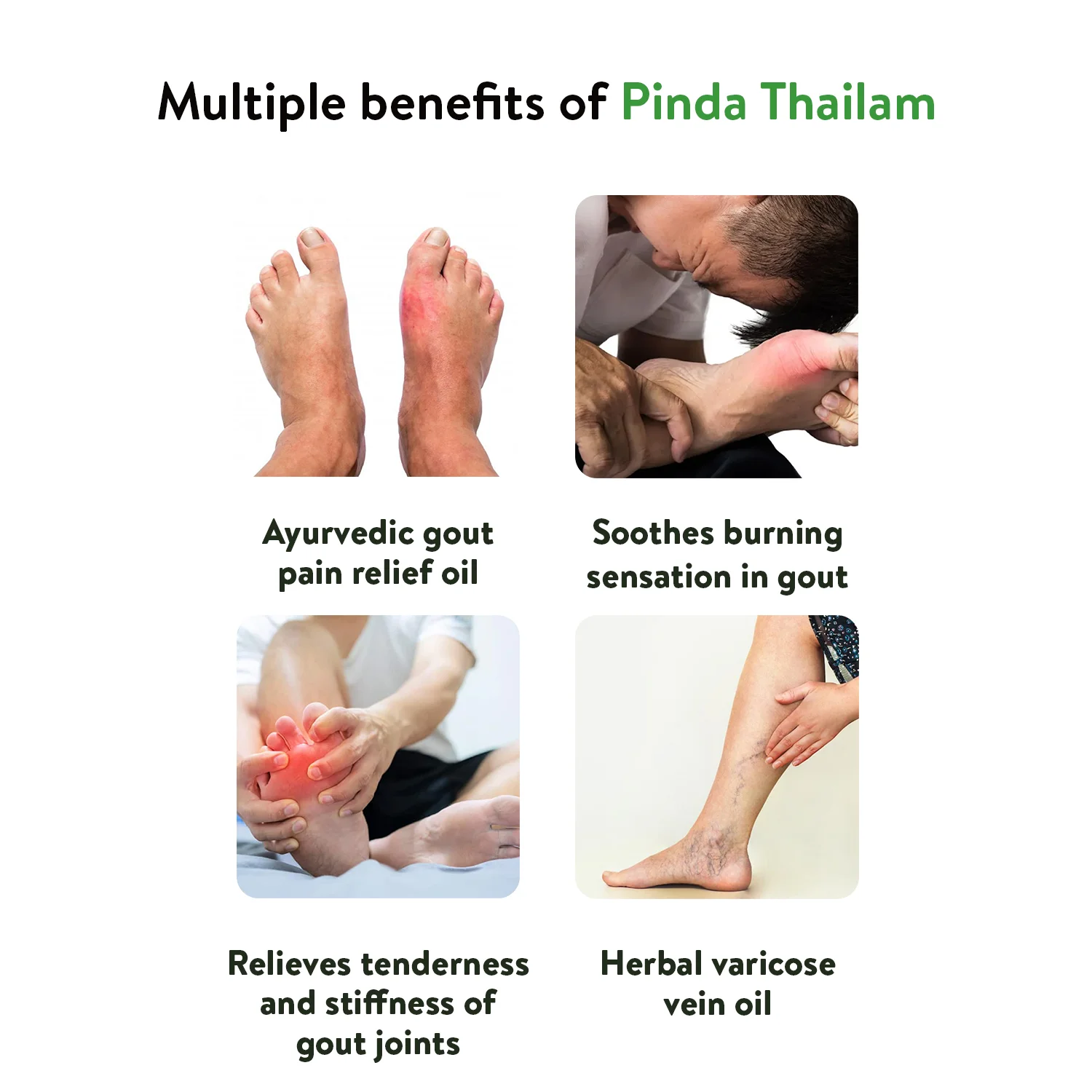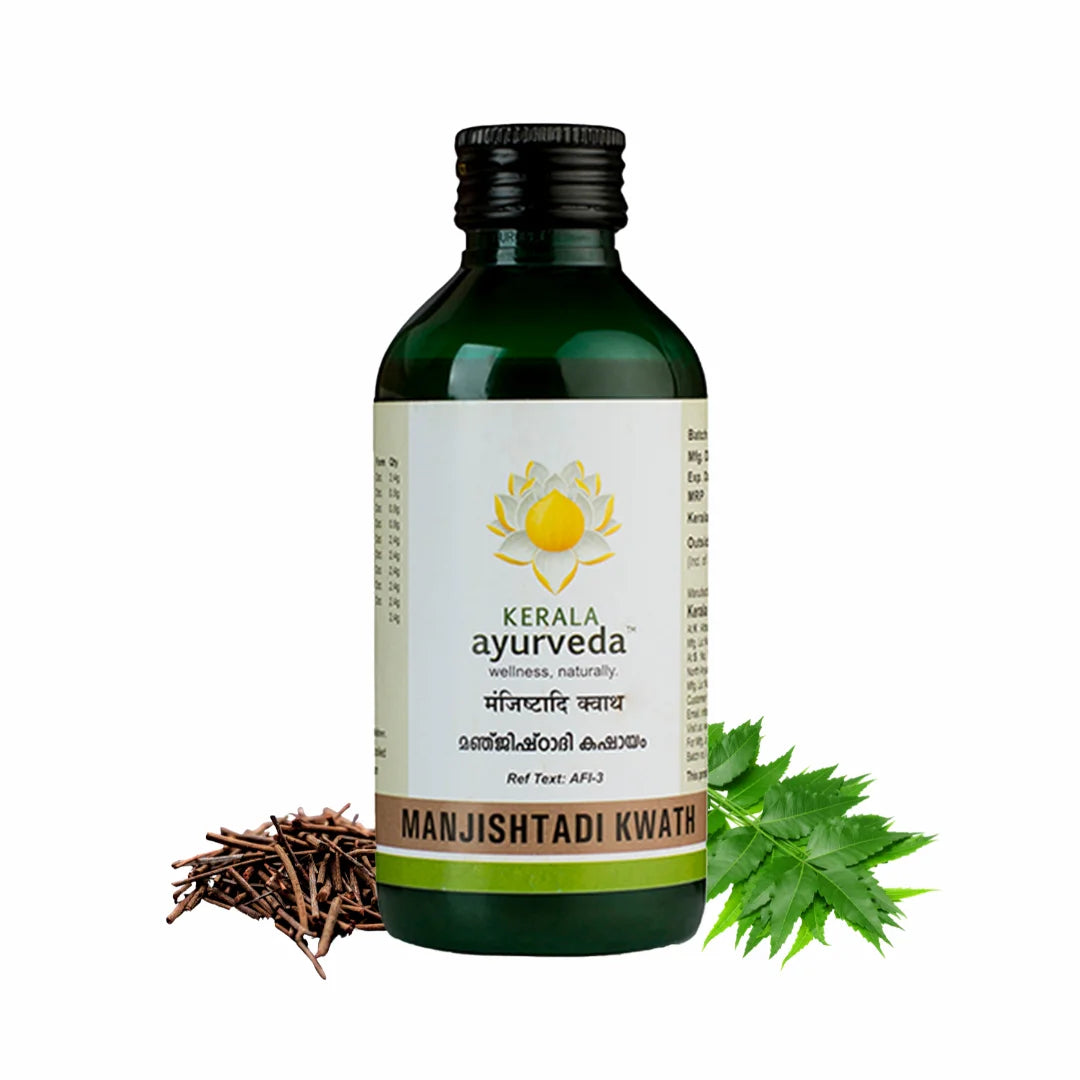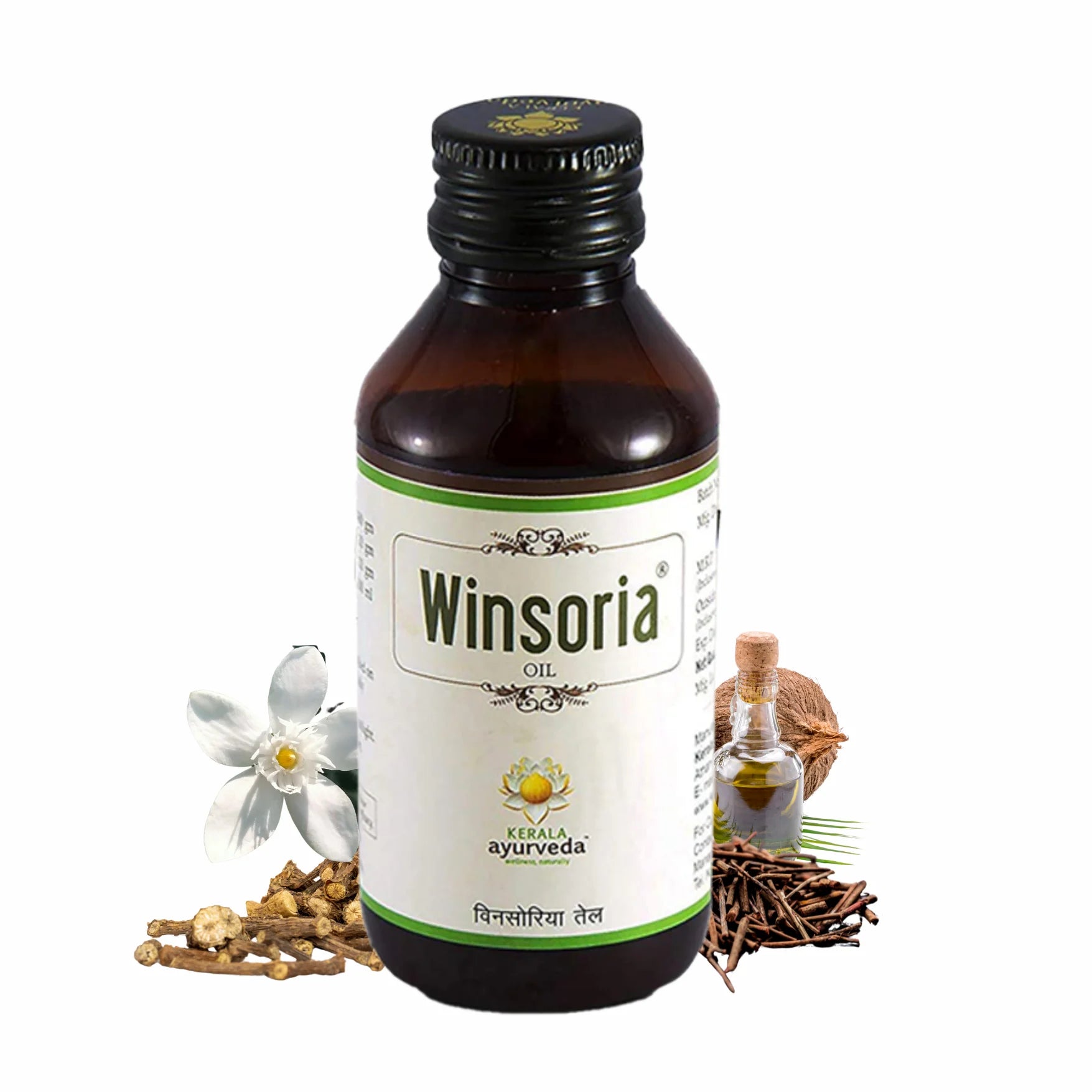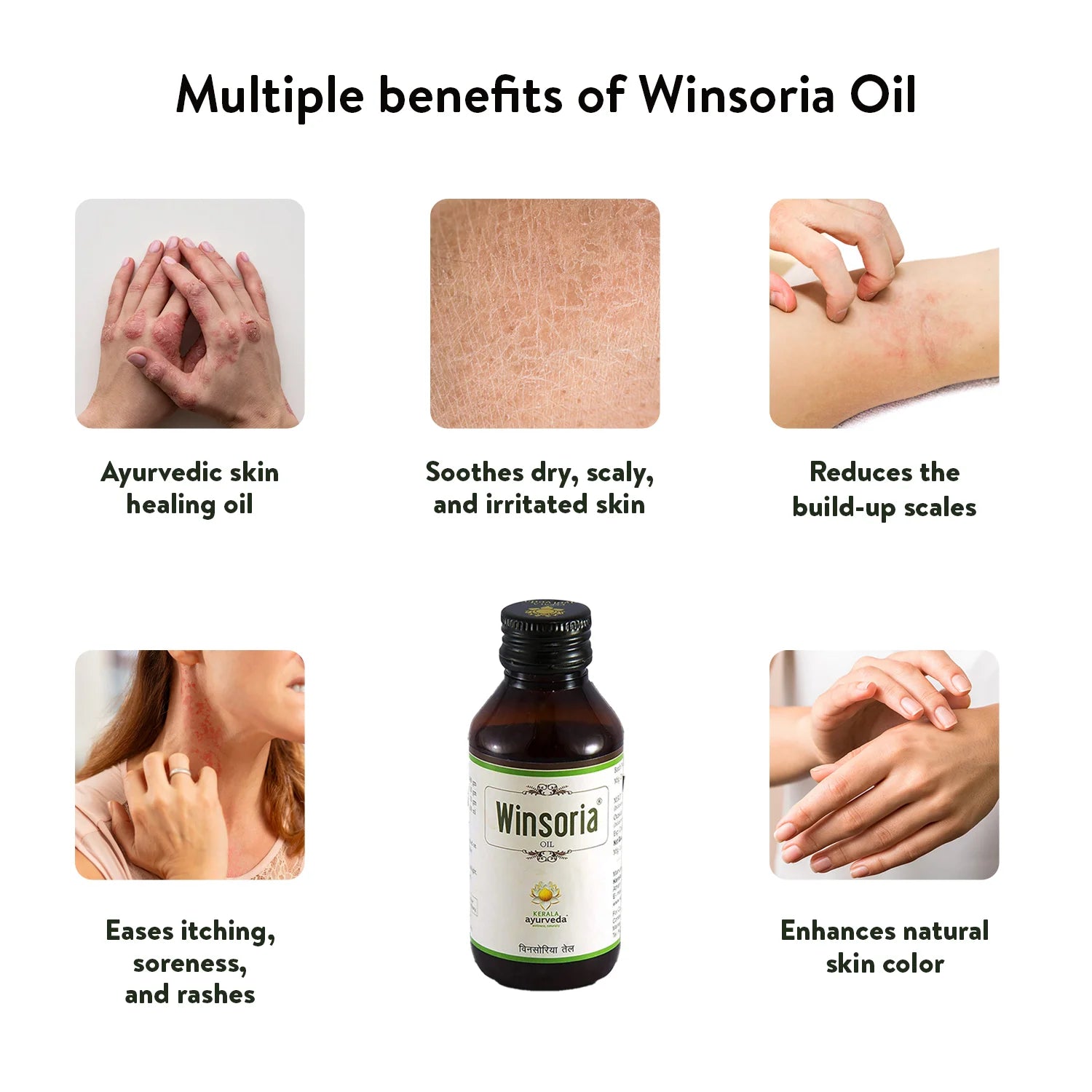Highlights
What is Manjistha (Rubia cordifolia)?
Manjistha, aka Indian Madder, is derived from the roots of the herb Rubia Cordifolia, belonging to the coffee family Rubiaceae. Our ancestors included the magical herb in their home remedies to enhance skin glow, balance blood sugar, and provide natural cleansing. The bright red roots that spread extensively through the soil might remind you of our circulatory system; this striking resemblance is no coincidence. Manjistha has a particular affinity to Rasa (plasma) and Rakta dhatu (blood tissue). The name ‘Manjistha’ itself translates to “bright red” in Sanskrit, which acknowledges the red-colored roots and its deep relationship with the circulatory system. Manjistha supports a healthy circulatory system because of its ability to soothe and balance Pitta and Kapha dosha. As Rasa and Rakta form the basis for subsequent tissues like Mamsa (muscle tissue) and Medas (fat tissue), Manjistha also supports the healthy formation and integrity of tissue layers. Manjistha's benefits are utilized worldwide to strengthen heart and liver health, improve skin health, and rejuvenate the whole body.
Botanical description of Manjistha

Rubia cordifolia is a perennial, herbaceous climber with rhizomatous bases and long red roots. The stems are thick, long, and cylindrical, slightly woody at the base, and heart-shaped, pointed leaves arranged as 2, 4, or 5 whorls on the stem. Flowers are small and greenish-white in colour, followed by small globose berries. The roots can grow up to 1 meter, have a thickness of 12 mm, are bright red, and are employed in various industries.
Native to the Indian Subcontinent, Manjistha is grown in several nations, including Tibet, Nepal, Afghanistan, India, and Bhutan. Commonly seen on grass slopes, deciduous forests, and semi-evergreen forests, Rubia cordifolia needs well-watered, loamy soils to thrive. One can identify the Manjistha plant across the subtropical to sub-temperate hilly regions in India, between 300 and 2000 meters in height.
Health Benefits of Manjistha
Ayurvedic science extensively discussed the benefits of Manjistha in various classics. The natural- blood purifier also helps manage your heart, liver, and skin health. Let's explore the health benefits of Manjistha:
Manjistha for Cardiovascular Disorders
As a potent cardio-tonic, Rubia cordifolia supports heart health. It can relax the heart muscles and blood vessels, prevent calcium deposition, and lessen the risk of atherosclerosis and heart attacks.
Manjistha lowers platelet aggregation by its antiplatelet property and restores normal blood flow. The herb also helps manage blood pressure by its vasodilating activity.
Anti-acne benefits of Manjistha
Included in the Varnya group by Acharyas, Manjistha can improve overall skin health and act as your natural acne solution. The root's antibacterial nature inhibits bacterial growth, which causes acne; its analgesic properties lessen pain, its anti-inflammatory properties reduce inflammation, and its antioxidant properties help eradicate scarring.
Manjistha for Diabetes
Ayurvedic sages include Manjistha roots in various medicinal formulations. The bitter taste and hot nature of Manjsitha enhance metabolic rate, flush out waste materials, and optimize insulin levels. The hypoglycemic and antioxidant properties also contribute to lowering blood sugar and eliminating its complications.
Manjistha for Wound Healing
Acharyas explained the herbs with the power of wound healing as ‘Vrana Ropana.’ Rubia cordifolia falls into this category and is widely used in various formulations to heal chronic ulcers and wounds. Folklore used decoctions with Manjistha to wash wounds.
The bioactive compounds in Manjistha roots promote tissue regeneration, wound healing, and closure.
Manjistha for Psoriasis
Ayurvedic literature links psoriasis to Pitta dosha and Rakta dhatu imbalance. The Raktasodhaka(blood purifying) and Pitta Samana properties of the herb help normalise Pitta dosha, purify the blood, eliminate the accumulated toxins, and reduce the symptoms of psoriasis.
Uses of Manjistha

The red pigment collected from Manjistha is used to dye fabrics, add color to paints, and prepare beauty products. The Manjistha uses include:
-
Dyeing:
Rubia cordifolia has been used in the textile industry for textiles and fabrics. Munjistin, the primary dye molecule, gives its famous red colour present in Indian chintz and cotton. The presence of alizarin and purpurin provides the fabric with a tinge of yellow and brown colour.
-
Beauty Products:
The natural colour gathered from Manjistha roots is used in cosmetic and beauty products. It is an active ingredient in natural lip balms, blushes, and other beauty products.
-
Painting:
Artists, painters, and crafters included the vibrant red pigment derived from Manjistha roots in their paintings, dyes, and other creative works.
Manjistha in Ayurveda
Manjistha is a potent blood purifier, and its root is extensively used in various formulations. It remains one of the primary ingredients in treating skin conditions. It is sweet and astringent in taste, hot in potency, heavy and dry in action, and pungent after digestion. Rubia cordifolia balances the vitiated Kapha and Pitta doshas; however, an excess dosage can aggravate the Vata dosha.
Acharya Charaka classifies Manjistha under the group Varnya, the herb that enhances skin complexion, while Acharya Susrutha is included in the group Vrana Ropana- herbs that promote wound healing. Manjistha is widely used in traditional Indian medicine for managing skin conditions, diabetes, urinary disorders, and ulcers.
Manjistha Dosage
The therapeutic dosage of Manjistha varies depending on the individual, disease condition, and formulation intake. The herb is available in various forms, including choornam, kwath, avaleha, gulika, etc.
We recommend you visit an Ayurvedic practitioner before consuming Manjistha to determine the dosage and period of intake. The regular doses suggested are:
- Choornam- 1- 3 grams of choornam by mixing with honey or warm water or as suggested by the physician.
- Gulika- 1-2 tablets alongside water twice daily after meals.
- Kwath- 20-50 ml of kwath in divided doses.
Kerala Ayurveda Products with Manjistha
Kerala Ayurveda utilizes the Manjistha benefits in various formulations. You can check our website and get the products delivered to your doorstep. The Kerala Ayurveda products that incorporate Manjistha include:
1. Pinda Thailam
The ruby red colour of Pinda Thailam, crafted by Kerala Ayurveda, is due to the presence of Manjistha. Manjistha has many benefits and is the best remedy for gout. The formulation helps reduce stiffness and burning sensation in Gout and manage pain associated with the later stages of varicose veins.
2. Manjishtadi Kwath:
Enriched with Manjistha, Manjisthadi Kwath is an ideal remedy for purifying blood. It ensures proper blood circulation and eliminates toxins. It can also help prevent skin conditions and fastens skin healing.
3. Winsoria Oil
Winsoria Oil is an innovative contribution from Kerala Ayurveda for managing Psoriasis, Eczema and skin infections. Regularly applying Winsoria oil will give you long-lasting relief from psoriasis and help restore the natural skin colour.
Side Effects and Precautions of Manjistha
Manjistha is generally safe and has no known adverse side effects. However, one must understand the potential Manjistha side effects before using it.
- If taken in excess quantities, Manjistha leads to constipation, owing to its heaviness and astringent taste.
- Manjistha can cause skin allergies in individuals with hypersensitive skin.
- The herb can react with anti-coagulant medications because of its anti-platelet properties.
- If consumed in heavy doses, Manjistha changes the color of stool and urine to brown or orange.
Even though the Manjistha is safe, one can adopt the following Manjistha precautions:
- Consume Manjistha powder with hot water if you have digestive concerns.
- Mix Manjistha powder with rose water to prevent skin reactions.
- If you're pregnant, breastfeeding, or on pre-existing medications, seek advice from an Ayurvedic expert before taking Manjistha.


